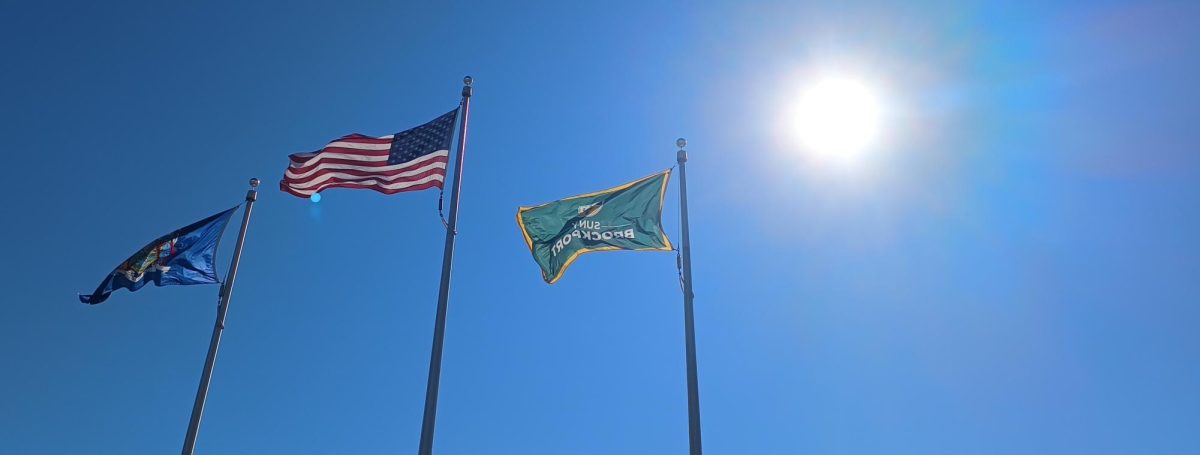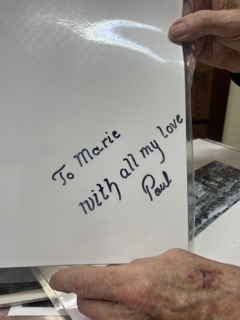Space tourism is unattainable for many curious about the extensive world beyond planet Earth. Luckily for stargazers, there is a portal to space on the campus of SUNY Brockport.
Free public planetarium shows, put on by SUNY Brockport’s Department of Physics, are held in Lennon Hall’s planetarium on the first and third Fridays of each month. The most recent show was held on Nov. 22. It featured a tour of the constellations and planets visible from Brockport. There was a screening of “Big Astronomy,” or “Astronomía a Gran Escala,” a documentary about the observatories in Chile, as well. The show was led by Physics Laboratory Supervisor and Physics Instructional Assistant Aaron Weaver.
Audience members were transported to space through the planetarium’s dynamic setup. The dark lighting and large, overhead screen allowed audience members to immerse themselves in the intricacies of the solar system.
The show began with a lesson about planets. Weaver projected the planets onto the screen so viewers could understand each planet’s size in relation to one another. Weaver then revealed where the sun was in relation to the other planets — the image of the sun dominated the screen, and the dark room glowed yellow and orange.

After the display of the full solar system, Weaver highlighted one specific planet: Uranus. He spent time discussing Uranus’s unique tilt, and how it compares to Earth’s tilt.
“Earth is titled about 23 and a half degrees, that’s how we get seasons and everything,” Weaver said. “But Uranus is tilted about 90 degrees, so as Uranus orbits the sun, it’s basically just rolling around on its side.”
Weaver also discussed Uranus’ moons. Instead of being named after Greek or Roman mythology like other planets’ moons, each of the 28 moons were named after characters from the works of Alexander Pope and William Shakespeare. These names include Umbriel, Prospero and Cordelia. Weaver revealed the name of each “literary moon” as they orbited the replica of the light blue gas planet.
The next portion of the show focused on constellations. Instead of lecturing audience members about the constellations that would be present that night, he described each constellation and had audience members guess where they would be. Audience members learned how they could view Big Dipper, Little Dipper, Cygnus, Pegasus, Pisces and Orion from Brockport.
After the guessing game, Weaver projected more constellations. The screen became filled with illustrations of what each collection of stars represented, from animals to mythological creatures. Weaver showed how the Earth’s rotation impacted the constellations’ visibility, introducing constellations that would become visible in the future. He only showed the constellations that were above Brockport.
“The other half would be down below the Earth, [which you can’t see] unless you have Earth-penetrating x-ray vision, which would be pretty awesome,” Weaver said.
After the constellation demonstration, the screening of “Big Astronomy” began. The film explained how Chile’s location and geography make it an ideal spot for conducting astronomical research. It showcased various observatories and the scientists and technicians who work there. The observatories featured included the Cerro Tololo Inter-American Observatory, the Gemini Observatory, the Atacama Large Millimeter/submillimeter Array and the Vera C. Rubin Observatory. The film touched on the technology behind the intricate telescopes present at these facilities.

The crowd was filled with a variety of people: college students, campus faculty members and those from the community. This included Dan and Grace, a father and daughter who came to the show together. The Nov. 22 show was Grace’s sixth time at Brockport’s planetarium. She said that it was her favorite show so far.
“I just liked the thing with Chile and I also like seeing the sky, too,” Grace said. “I love learning about the planets and stars and stuff.”
People of all ages said they enjoyed the “Big Astronomy” screening. Brockport community member Steve Krause is a retiree who attended the planetarium for the first time. He said his favorite part was learning about the telescopes in Chile.
“I guess I had known there were telescopes in different countries, but I didn’t realize there was so much in just Chile,” Krause said.

Those in attendance not only learned about constellations and telescopes, but about SUNY Brockport itself. SUNY Brockport Communications and Journalism, Broadcasting and Public Relations Administrative Assistant Sandy Persons said that events like the public planetarium show help shape the community’s perception of the college and college students.
“I definitely think it shows that are we’re doing things, that we are having technological advances, and we’re willing to share them. It’s things that the community can enjoy and take advantage of,” Persons said. “You see these posts about, oh, it must have been the college kids doing bad things, and you know, I don’t think that’s true. I think it’s like any other town you might have kids or people that do bad things, but it’s not the college kids, so it’s good to show the accomplishments that we can get.”
The Nov. 22 screening was not the final public planetarium show of the semester. Stargazers have one more opportunity to discover outer space on Friday, Dec. 13.






















